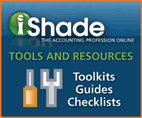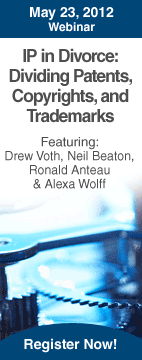
| May 23, 2012 | Issue #116-4 |
If the courts are still confused about goodwill—does that mean appraisers are also? Courts across the U.S. are still struggling to determine and divide goodwill in divorce cases—particularly in those jurisdictions that follow the majority rule and require making a distinction between personal goodwill (nondivisible) and enterprise goodwill (divisible). “Or is it the valuator who is confused?” asked presenters Sharyn Maggio (Maggio & Co.) and Miriam Mason (Mason Black & Caballero) at the recent AICPA/AAML National Conference on Divorce in Las Vegas. Some appraisers might consider Maggio lucky; she practices in New Jersey, which does not recognize the distinction. “It’s all divisible,” Maggio said, “but I work with one practitioner who insists that with respect to a highly skilled professional, there is no goodwill: It’s all personal.” Other states’ courts have agreed, relying on an inverse argument. For example, in a Missouri decision, the husband claimed he was a key employee in his seven-man roofing business, but the court declined to reduce its value by any personal goodwill, finding the husband didn’t provide the highly skilled professional services that would qualify. Some courts have determined that all professional goodwill must be salable to be divisible, as evidenced by a noncompete; still others preclude the appraiser from assuming the presence of a noncompete. Notably, in Gaskill v. Robbins (2009), the Kentucky Supreme Court held:
The Gaskill court also required that any goodwill value “must” have a rational basis in accounting principles and “should avoid speculation and assumptions as much as possible.” This language is a “little disconcerting,” Maggio said. BV appraisers have to make assumptions, particularly regarding goodwill. “But courts don’t like it,” she added, noting that Gaskill is a “must read” case, no matter where you practice. In fact, this year the case came up again after another trip through the courts, and the appeals court affirmed the previous decisions. We've put together the two courts' opinions as well as the respective case digests in a new download; access your copy at BVR's free resources page. Understanding, explaining, and supporting goodwill values When does a noncompetition agreement, real or assumed, factor into the assessment of goodwill? What about evidence of buy-in value, or prior sales of the practice? What is the effect of a buy/sell agreement? How does a BV expert (and a court) go about assessing and quantifying the attributes of personal versus professional goodwill? What impact is the current economy having on goodwill values? If, after reading Gaskill, you still have questions—or just want to ensure the most current, credible analysis to support your goodwill values—then consider joining Jim Alerding (Alerding Consulting) and Stacy Collins (Financial Research Associates) on June 7 for Personal vs. Entity Goodwill. Less than a week left to participate in BB/BVR salary survey That’s right! Excluding weekends and the Memorial Day holiday, BV firms have only six days left—just until Friday, June 1—to participate in the Borrowman Baker/BVR 2012 BV Salary Survey. “One of the most common questions I hear [from BV hiring partners] is ‘how much should I be paying for X position?’” says survey creator and collector John Borrowman. The most common (if not only) answer is, of course, for the profession to “do what it takes” to produce a statistically valid, BV-specific compensation survey. Do it now. All it will cost you is time—and time is running out. “BV practices across the country have already participated,” Borrowman says, but the more quality data that goes into the study, the higher the quality that will come out, including data from a firm such as yours. Go to the Welcome Page and begin. Economy may be triggering litigation in every public deal “Almost every acquisition of a large U.S. public company announced in 2010 or 2011 elicited multiple lawsuits,” says a new report, Recent Developments in Shareholder Litigation Involving Mergers and Acquisitions—March 2012 Update. “Only a small fraction of these lawsuits, however, resulted in payments to shareholders,” adds the report summary; “the majority settled for additional disclosures or, less frequently, changes in merger terms, such as deal protection provisions.” Highlights of the 2012 M&A litigation update:
A flight from Delaware? Delaware courts continue to claim a greater share of the litigation, with case filings climbing from 34% of all shareholder suits in 2007 to 45% in 2011. At the same time, “the most striking trend in venue choice,” the study says, is that while shareholders are challenging the same deal in Delaware, they are increasingly likely to file a suit based on the same facts and claims in California, New York, and Texas, “likely reflecting where many deal targets are headquartered.” ‘Be agnostic’—and be thorough—when it comes to assessing IP in divorce What happens to IP assets if they are not specifically identified and allocated during a divorce? Consider the recent case in which the husband owned two patents. During their 2001 divorce in California, both parties stated they had no community property. The husband subsequently assigned the patents to a third party, who sued Nextel/Sprint in federal court for infringement. Nextel claimed the plaintiff didn’t have standing to sue, however, because it failed to join the ex-wife, who—under California law—presumptively co-owned the patent. It took nearly 10 years and several trips to state and family court and then back to federal court and an appeal, but the Federal Circuit ultimately agreed that the wife was the presumptive co-owner of the patents. However, the parties overcame that presumption in their divorce decree, effectively precluding the wife from taking any interest in the patents, then “or anytime thereafter,” the court held, in Enovsys v. Nextel Communications, Inc. (2010). The bottom-line for IP experts and attorneys: “Whether you represent the creator of the patent or the spouse, you’d better make sure you can cover every possible variable and be prepared to educate the judge on every possible alternative use for the patent,” advised Ronald Anteau (Kolodny & Anteau), who spoke at the recent AAML/AICPA conference in Vegas. “I’m agnostic when it comes to anything but the asset,” agreed co-presenter Neil Beaton (Alvarez & Marsal). “From a purely economic standpoint, it doesn’t matter if I represent the creator [of the IP] or the spouse. My job is to come up with a range of value that resides in the asset [and/or] the company.” To protect your client—and yourself—tune into IP in Divorce: Dividing Patents, Copyrights, and Trademarks on May 23, now featuring four experts: Beaton and Anteau as well as Drew Voth (Alvarez & Marsal) and Alexa Wolff (Kolodny & Anteau). Takeaways from the ASA’s 7th Annual Advanced Conference on Fair Value “There are some important proposed FASB rules that will potentially affect valuation experts and their business clients directly, specifically with equity and fair value measurements,” said Ben Couch, Valuation Practice Fellow at the Financial Accounting Standards Board (FASB), speaking May 15 at the 7th Annual ASA Advanced Conference on Fair Value in Los Angeles. "Key among these proposed rules is the application of the instrument criterion for financial instruments,” he said. “Equity securities will be measured in fair value net income (FV-NI), with a practicability exception for nonmarketable equities held by nonpublic entities.” Couch spelled out the characteristics of the instrument criterion: “It is a debt instrument, not a derivative, and the amount transferred that you would expect to get back, that is, the investor has some sort of control over the credit assets of the instrument that can be amortized.” The framework FASB has come up with for equity instruments is an initial measurement in cost, less impairment, plus any upward or downward adjustments in fair value when a change in price is observable. What does an observable change in price mean? Couch says it is price change in orderly transactions for identical or similar assets by the same issuer. Meanwhile, Anthony Aaron (E&Y) noted an upcoming announcement that The Appraisal Foundation’s fourth working group on contingent consideration will pick five people for that group. Posting of the scope of work document on contingent consideration is expected in May or June 2012. Clarity is the best policy, Webb reminds Tax Court Symposium audience No one wants to go to Tax Court, so what steps can valuation experts take to keep their clients out of it? Dennis Webb, a principal of Primus Valuations, listed three basic principles at the ASA’s May 17 U.S. Tax Court Cases Symposium in Cerritos, Calif.:
IVSC seeks candidates for vacancies on three boards The International Valuation Standards Council (IVSC) just issued its annual call for qualified applicants to fill several soon-to-be empty spots on three of its boards:
Applications are due by June 15, 2012; for more information, click here. Become a ‘Seigneur’ expert witness Ron Seigneur (Seigneur Gustafson) will be one of the leading facilitators at the AICPA’s Expert Witness Skills Workshop, July 26-28 in Chicago, as will chair Stacey Collins (Financial Research Associates). Working with a case study as a “roadmap,” participants will work on practical skills during Day 1—including a review of expert reports, presentations, and mock depositions. Day 2 will focus on communication skills, complete with videotaped examinations (and cross-examinations of the expert “witnesses”). Day 3 closes with a complete mock trial, also videotaped, and a follow-up critique by a panel of “real life” judges. “We have an amazing cast of judges, attorneys, and financial experts involved in this,“ Seigneur says. Intense but invaluable experience will be had by all. Holiday Hiatus The BVWire will take a brief break for the Memorial Day holiday next week. We will resume publication on June 6, 2012. Happy start to summer!
To ensure this email is delivered to your inbox, please add editor@bvwire.com to your e-mail address book. We respect your online time and privacy and pledge not to abuse this medium. To unsubscribe to BVWire™ reply to this e-mail with 'REMOVE BVWire' in the subject line or use the link below. This email was sent to %%emailaddress%% Copyright © 2012 by Business Valuation Resources, LLC |
|



